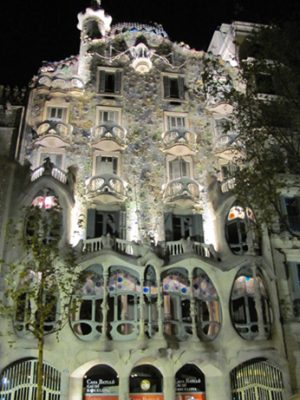Por Luiz Ernesto Wanke – Esta é uma história de cadeia.
Trabalhei como dentista na Penitenciária Central do Estado do Paraná por dez anos. Lá ouvi histórias divertidas como esta e também, as amargas, como as da rebelião de 1989 – em que escapei por um triz – e onde morreram onze pessoas (dez presos e um agente, todos baleados pela polícia).
E o hospitalzinho desta história é o mesmo onde estão alguns presos da operação Lava-Jato.
Há muito o interno Neco não gozava da liberdade de andar por chãos diferentes. Então vibrou quando o guarda veio trazer-lhe a novidade de que sua reivindicação para conseguir óculos tinha sido atendida. Foi avisado que na outra manhã a escolta já estava escalada para levar um grupo de presos que estavam precisando de atendimento especial no hospitalzinho que fica a uns dez quilômetros da penitenciária e onde está o Manicômio Judiciário. Fora das esporádicas visitas ao Fórum para responder aos processos, são impossíveis as oportunidades de saída.
Na expectativa daquele passeio maravilhoso, Neco caprichou no banho e no traje. Exagerou tanto que causou espanto nos companheiros de camburão, sendo o principal alvo das piadas conhecidas: “Vai fazer exame de fezes?” ou “Com toda esta panca vai telefonar para a favela?”
Mas as providências da Segurança demoraram tanto que ao chegarem ao destino já passava da hora do almoço. O camburão despejou sua carga humana no pátio e célere ‘se mandou’ porque toda sua tripulação estava ávida para desfrutar o picadão da penita e ninguém queria conferir a má fama da comida do manicômio. Nem o Neco, é claro, que sem pressa colocou-se no último lugar da fila para que o anotador registrasse a entrada dos presos. Assim ficou divagando, principalmente com a horta bem cuidada que ficava ao lado do prédio principal, tanto que distraidamente se afastou do resto da turba. Sua cabeça estava longe, girando, lembrando-se dos tempos que plantava lá no sítio da família e com isto, foi se afastando cada vez mais da fila. Até se dar conta e correr afobado para se apresentar ao anotador. Mas chegou tarde porque agora era ele que estava se levantando:
“- Que canseira!” queixou-se o funcionário, largando a caneta no tampo da mesa e dando aquela gostosa espreguiçada:
“- Então é nosso convidado pro grude?”
Surpresa com sua atitude desconexa, Neco procurou ganhar tempo para entender a situação. Tentou dar uma explicação qualquer sobre o seu atraso, mas a prudência mandou que se calasse.
“- Pois eu tenho que tratar da minha fome!” Completou o anotador desaparecendo por uma porta lateral.
Estático, Neco ficou ali parado, só e aturdido com a situação. Começou a entender o que se passava: não é que o cara tinha confundindo-o com um funcionário acompanhante da caravana? Isto por conta do atraso e do traje. Nada mal, mas a fuga desejada que instantaneamente se armou na sua cabeça tinha problemas… Saiu de fininho do prédio e foi analisar suas chances. Cauteloso se aproximou novamente da horta e viu que depois da cerca se estendia um pavoroso banhadão. Sorriu por dentro ao pensar que, se tinha caprichado tanto na roupa não valeria a pena ser capturado todo sujo.
Já que pular a cerca não era, literalmente, a sua saída, voltou até perto do prédio e olhou em direção ao portal. Gelou porque percebeu o guarda porteiro olhando-o curioso. Não teve escolha, foi ao seu encontro, numa típica estratégia de que a melhor defesa é o ataque.
Ainda longe do guarda falou alto:
“- Gente boa, o homem vai demorar?”
O guardinha não entendeu.
“- O diretor não vem mais?” Repetiu de perto.
“- Ah, o diretor? Pode esperar sentado… Isto aqui é uma merda, não é todo dia que aparece e quando isto acontece assina uns papeis e se manda. Quem toca esta bosta é o vice… Serve?”
Não é que a mentira colou? Agora só tinha que administrar a situação.
“ – Não, meu trato é com o homão!”
“- Sobre o que?” Melou o guarda.
Neco não tinha resposta pronta. Olhou para os lados e lembrou-se de ter visto lá na penitenciária alguns canos pendurados e soltos no teto. Foi o mais rápido possível:
“- Sobre o encanamento!”
O guardinha fez um sim com a cabeça:
“- Cara está mesmo tudo vazando e este prédio só tem cinco anos de construção.”
“- Pois é, serviço para o governo é assim mesmo, não dura nada.”
A liberdade agora estava a cinco passos. Neco se aprumou:
“- Irmão não vou mais esperar… Sou pobre e tenho que correr atrás do prejuízo.”
Ficou deslumbrado acompanhando a ação lenta do porteiro, destravando e escancarando a folha do portão de saída. No vão que ia aumentando, pode vislumbrar a fresta da liberdade. Mas o guarda não largava do seu pé:
“- Não quer mesmo falar com o vice?”
“- Não esquente que amanhã eu telefono antes e não repito a burrada!”
O porteiro se aproximou, pegou no seu ombro e apontou para algum lugar distante:
“- Você é rabudo, rapaz. Lá adiante o ônibus está chegando ao final da linha!”
Finalmente Neco deu o primeiro passo na liberdade… Mais um pouco e ‘adeus, cadeia!’. Aí ouviu um grito do desgraçado do guardinha:
“ – Ei, cara!”
Ficou na dúvida se atendia ou não, mas pediu calma para si mesmo. Parou e deu uma olhada de relance: não é que o porteiro corria na sua direção? Suas pernas congelaram e pensou que aquela bela história chegara ao fim. Mas, para sua surpresa, o guarda gritou:
“- Se você não correr vai perder este ônibus que só aparece aqui duas vezes por dia!”
‘Ordem é ordem’, concordou silenciosamente.
Finalmente Neco pode olhar para o céu azul, aspirar o ar da liberdade e fazer aquilo que vinha reprimindo desde que se sentiu sozinho:
‘Por sebo nas canelas!’
(Do livro inédito, ‘Pobrete, mas alegrete’.)


















